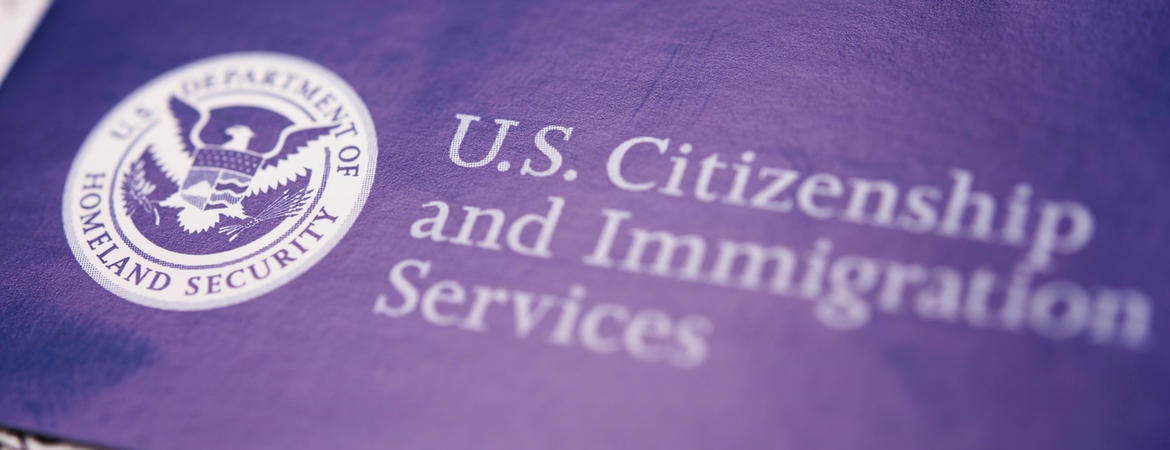
One of the defining elements of the 2016 election cycle was its focus on immigration. On both sides of the partisan divide, immigration figured heavily into candidates’ talking points and served as a key determinant of voting behavior.
But while pundits and the public weighed the social and economic effects of immigration, researcher Brittany Morey instead homed in on another aspect of the immigrant experience.
“I started wondering how anti-immigrant rhetoric connects to health in the United States — or is there a connection to be made at all?” said Morey, a UC Chancellor’s postdoctoral fellow in the School of Public Policy at the University of California, Riverside.
For years, Morey has studied how the experience of being an immigrant in the United States — a reality often marked by stigma, social isolation, and discrimination — affects health. Working closely with co-researchers Gilbert Gee of UCLA and Peter Muennig and Mark Hatzenbuehler of Columbia University, she set out in search of a concrete way to tie social attitudes toward immigration to an unambiguous health outcome: mortality.
Bridging the gap between the two, she explained, would allow her to determine whether being a target of anti-immigrant prejudice has any bearing on long-term health.
Morey and her fellow researchers presented their findings in an article published in the journal Social Science & Medicine. They discovered that living in a community that demonstrates significant anti-immigrant prejudice doesn’t seem to affect the mortality rates of immigrants as a whole.
However, when compared with their foreign-born counterparts, nonwhite and nonblack ethnic minorities who had been born in the U.S. “seemed to experience increased mortality risk in communities with high anti-immigrant prejudice,” the researchers wrote.
To reach these conclusions, they merged two existing sets of data to create an entirely new set. The first existing set made use of the General Social Survey, or GSS, an assessment conducted every two years to gauge American public opinion toward a range of social issues, including immigration.
“The General Social Survey has been repeated since 1978, and it features a lot of measures concerning people’s opinions toward things like race and religion and politics,” Morey said. Among other measures, the survey asks respondents to rate on a scale from one to five their agreement or disagreement with statements such as:
- “America should take stronger measures to exclude illegal immigrants.”
- “Immigrants take jobs away from people who were born in America.”
- “Immigrants increase crime rates.”
- “Immigrants are generally good for America’s economy.”
By looking at survey responses, the researchers were able to compare varying levels of anti-immigrant prejudice in individual communities.
In the interest of evaluating GSS respondents’ health outcomes, the team also drew on the National Death Index, a centralized database of death record information. Combining data from the survey and the index allowed the researchers to study, for the very first time, “whether community-level anti-immigrant prejudice is associated with mortality risk,” they explained.
All told, their final sample contained 13,242 respondents living in 123 communities known as primary sampling units, or PSUs. The final sample also took into account respondents’ race and whether they had been born in or outside the U.S.
The researchers noted that prior to 2002, the GSS didn’t allow self-reporting of race and only included three racial categories: white, black, and “other race.” Beginning in 2002, those categories were expanded to include American Indian, Alaska Native, Asian or Pacific Islander, and Hispanic.
The final sample’s racial breakdown was 79 percent white, 14 percent black, and 8 percent “other race,” with 47 percent of “other race” respondents born in the U.S. and 53 percent born in foreign countries.
While black GSS respondents had the highest overall mortality rate as of 2014, “other race” respondents had the lowest.
Yet a closer read of the data revealed a notable set of trends: U.S.-born “other race” respondents had greater mortality risk in PSUs that were identified as high-prejudice communities, compared with those living in low-prejudice communities. Foreign-born “other race” respondents, meanwhile, showed the opposite — their mortality risk was actually lower when they lived in high-prejudice communities as opposed to low-prejudice communities.
“I didn’t necessarily think it would matter whether respondents were foreign-born or U.S.-born, since anyone who might be assumed to be an immigrant could be a target of anti-immigrant sentiment,” Morey said. “But I was surprised that it was actually the U.S.-born ethnic-minority respondents who were doing much worse versus the foreign-born immigrants who seemed to be doing better.”
The researchers also created a subsample of respondents who had self-identified as Asian or Hispanic beginning in 2002; the results for this smaller subsample corresponded with the results for the larger “other race” category.
They suggested a variety of explanations for why foreign-born immigrants seem to experience a mortality advantage. For starters, the foreign-born respondents who had been surveyed tended to have been living in the States for less time than their U.S.-born counterparts who had grown up here. As a result, foreign-born immigrants were less likely to have experienced direct community-level prejudice, or to have internalized anti-immigrant sentiments.
“Exposure to discrimination in adolescence has negative effects on mental health and health behaviors that, over time, could increase risk for morbidity and mortality,” the researchers added, noting that U.S.-born ethnic minorities might suffer more long-term effects of community-level prejudice because they’re more integrated into the dominant culture.
On the other hand, living in close-knit ethnic enclaves within larger, more prejudiced communities might serve as a form of protection for foreign-born immigrants who benefit from “more homogenous social networks of other immigrants.” Such networks could provide both health-boosting social capital and double as barriers against anti-immigrant prejudice.




